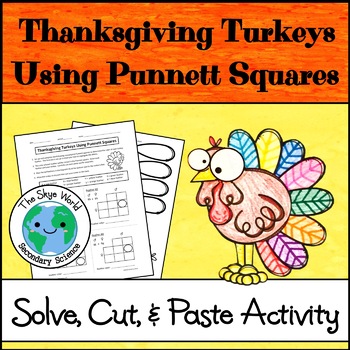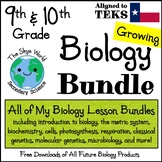Thanksgiving Science Activity Using Punnett Squares to Build a Turkey
- PDF
What educators are saying
Also included in
- In this growing bundle of lessons, students will learn to set up Punnett squares, solve probability problem, and decode pedigrees. This bundle will also prepare biology students on the topics of types of inheritance, ABO blood types, codominance, monohybrid and dihybrid crosses, and the laws of inhePrice $27.00Original Price $40.00Save $13.00
- This growing bundle of lessons for 9th and 10th grade biology includes the metric system, biochemistry, cells, photosynthesis, respiration, cell division, heredity, and classical genetics. Bundles include notes, worksheets, lab activities, card sorts, task cards, digital Boom cards, review sheets,Price $191.00Original Price $317.00Save $126.00
Description
In this activity, students will learn to set up and solve a monohybrid Punnett square for classical genetics problems to find the colors of eight tail feathers for their turkey. After completing this activity, 7th grade science and biology students will be able to calculate the genotypes and phenotypes produced in each single trait problem about inheritance.
Important Information
- Answer keys included
- Recommended for 7th grade science and biology classes
TEKS Covered
7.14A
7.14B
B.6F
NGSS Standards Covered
MS-LS3-2
HS – LS3-2
Materials
white card stock for turkey print out, crayons, markers, scissors, glue
Also found in this money saving bundle
Related Resources
Thank you to Creating 4 the Classroom for the commercial right to use their clipart. Click here to visit their wonderful TpT site.
Terms of Use – copyright ©Catherine Skye All rights to this product are reserved by author. This authorizes one teacher to use this product. If you want to share it with other teachers, please purchase a license to share this work. Copying by more than one teacher, classroom, department, school, or school system is prohibited UNLESS you purchase a license. Clipart and elements found in this PDF and others on my site are from the public domain unless otherwise noted. All products on my site are intended for classroom and personal use and may not be digitally copied for reuse in any form. Any misuse is considered copyright infringement and violates the DMCA (Digital Millennium Copyright Act).







